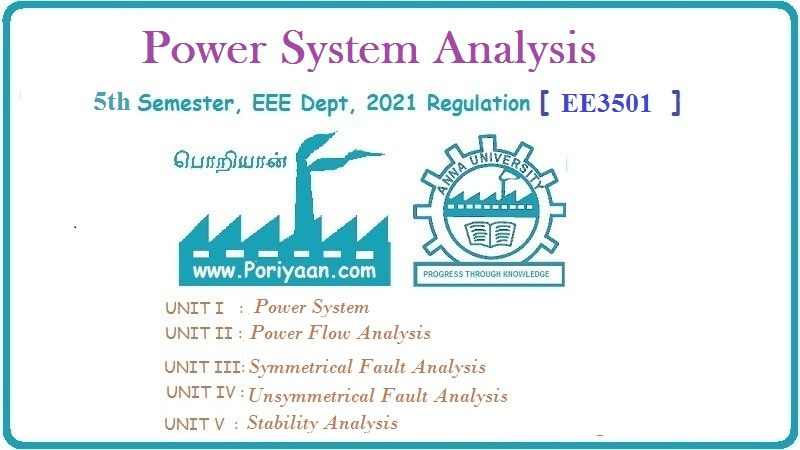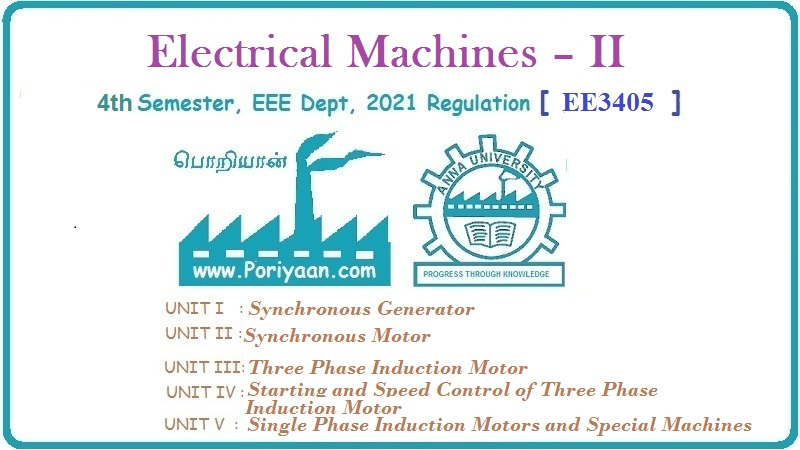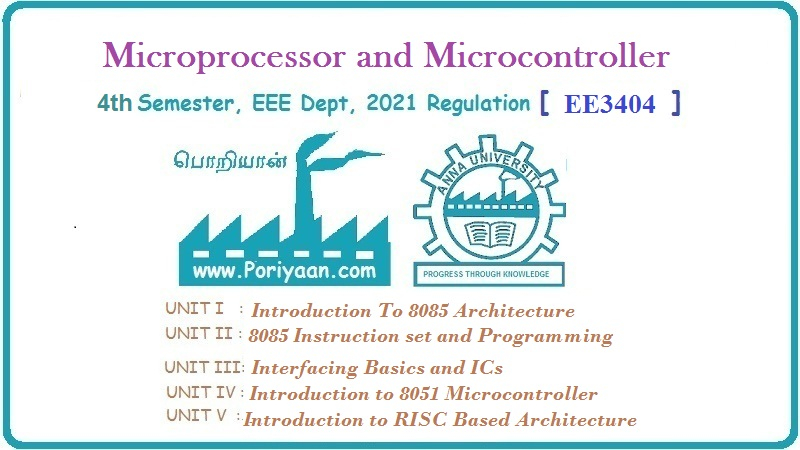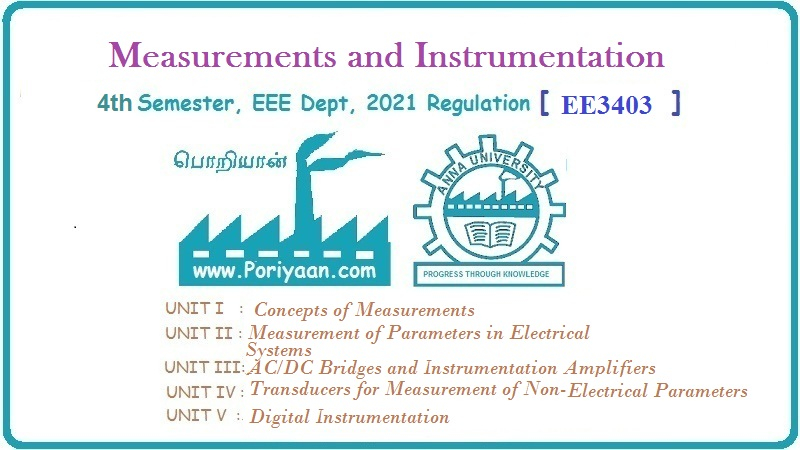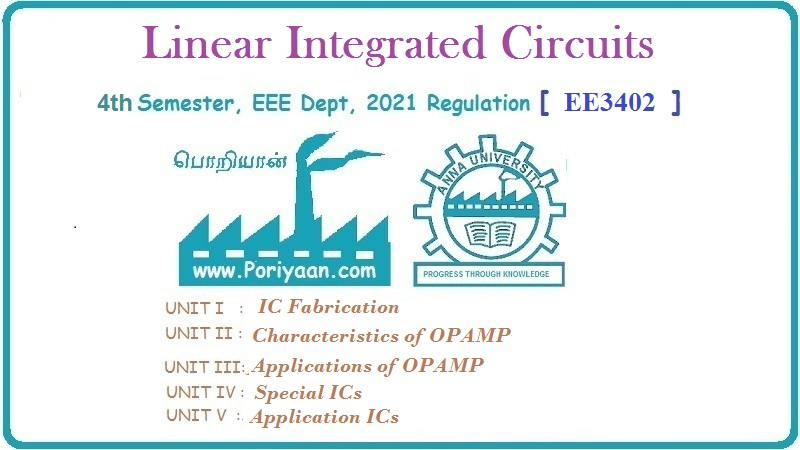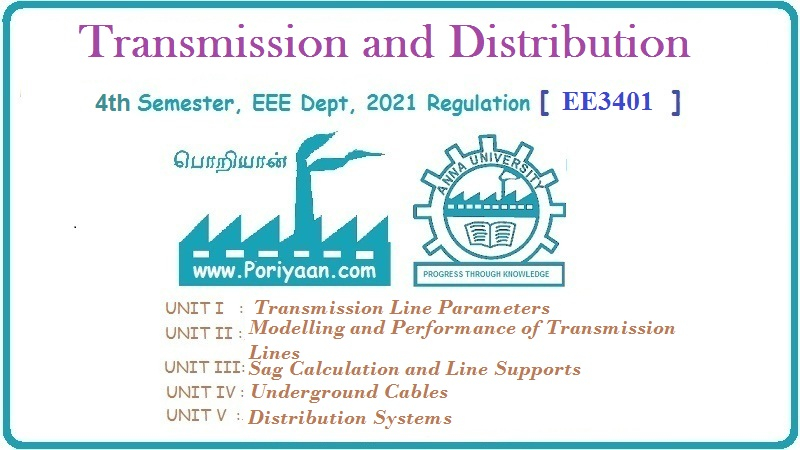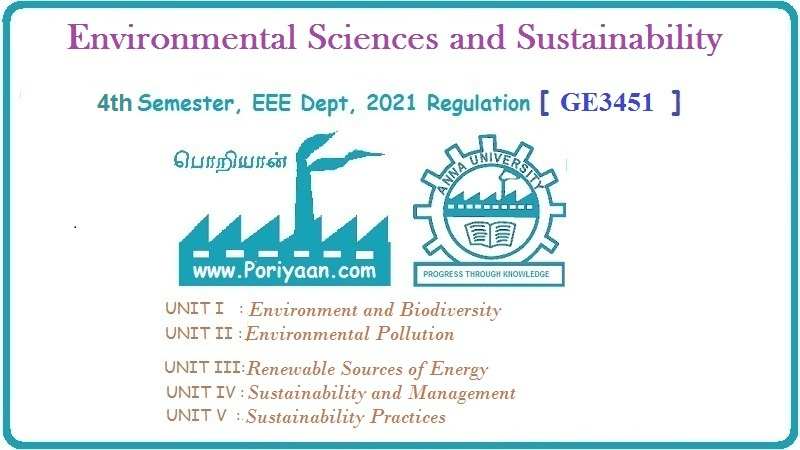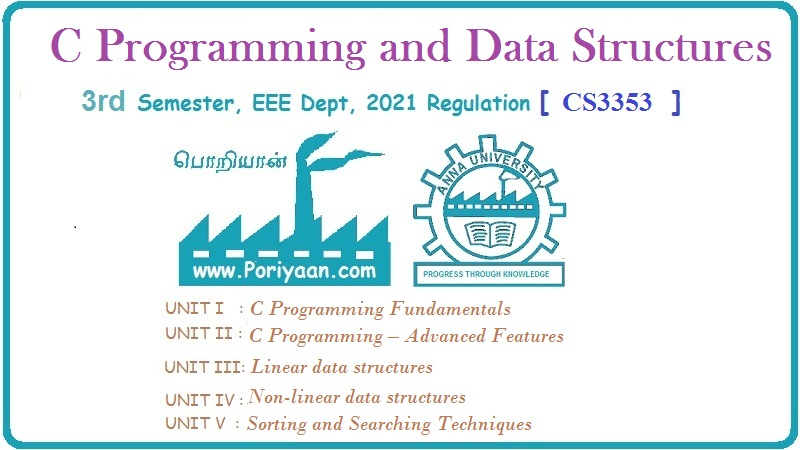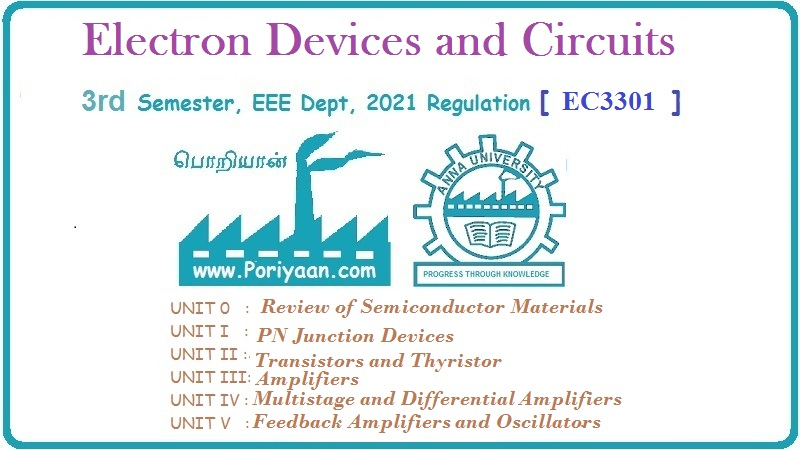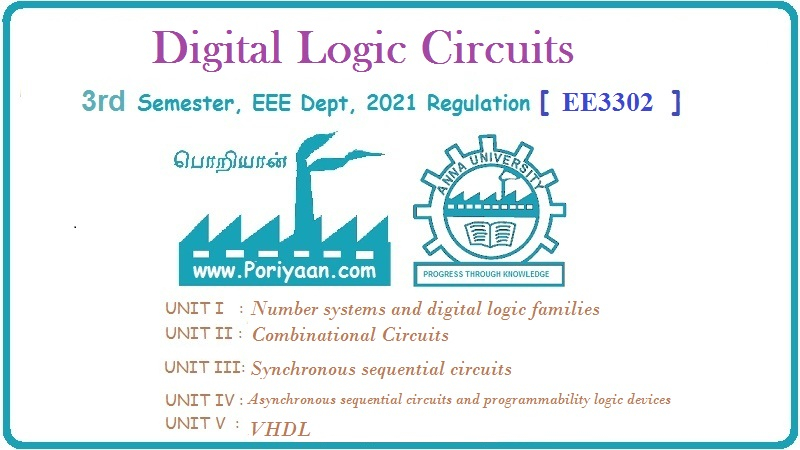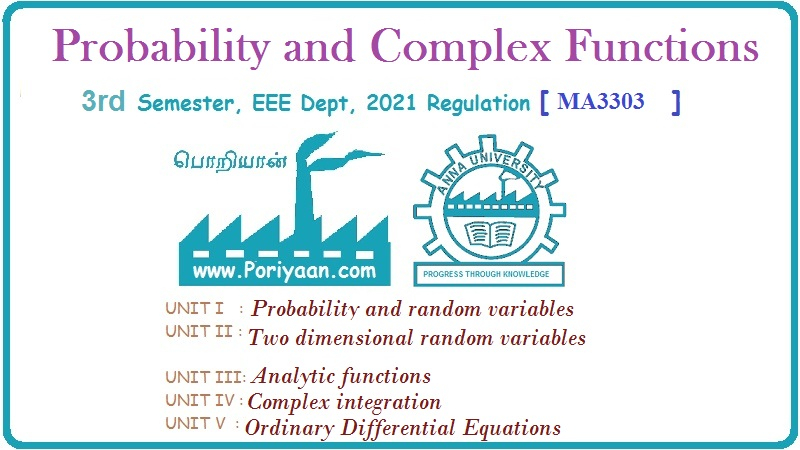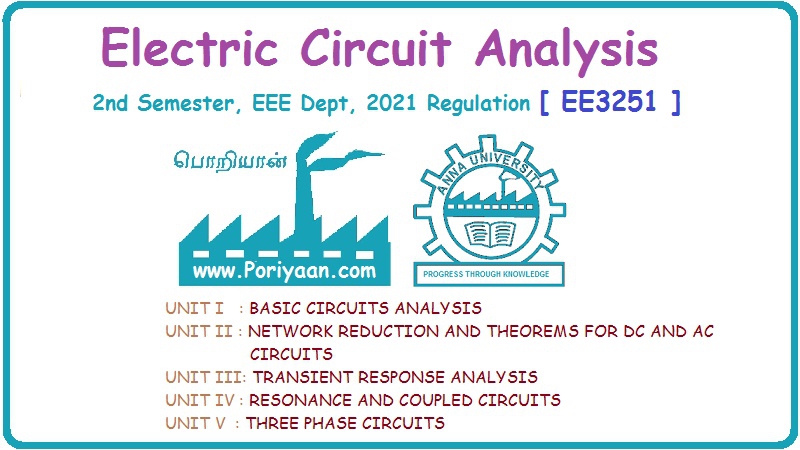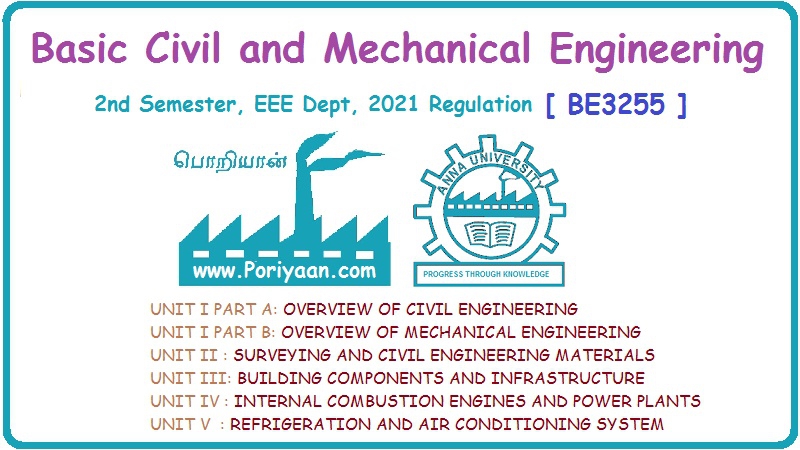Physics and Chemistry Laboratory
BS3171 Practical Experiment 2021 Regulation

2021 regulation - 1st year, 1st semester paper for all department including EEE, ECE, MECH, CIVIL, CES, IT, etc. Subject Code: BS3171, Subject Name: Physics and Chemistry Laboratory Practical Experiment, Batch: 2021, 2022, 2023, 2024. Institute: Anna University Affiliated Engineering College, TamilNadu. This page has Physics and Chemistry Laboratory Practical Experiment.
PDF Download Links
Physics and Chemistry Laboratory
- 1. Preparation of Na2Co3 as a Primary Standard and Estimation of Acidity of a Water Sample Using the Primary Standard
- 2. Determination of Types and Amount of Alkalinity in Water Sample
- 3. Determination of total, temporary and permanent hardness of water by EDTA Method
- 3 (a) determination of total, temporary and permanent hardness of water by EDTA method (EDTA method - ii)
- 4. Determination of dissolved oxygen content of water sample by winkler's method
- 5. Determination of chloride content of water sample by argentometric method [mohr's method]
- 6. Estimation of copper content of the given solution by iodometry
- 7. Estimation of total dissolved solids of a water sample by gravimetry
- 8. Determination of strength of given hci using ph meter
- 9. Determination of strength of acids in a mixture of acids using conductivity meter
- 10. Conductometric precipitation titration using BaCl2 - Na2SO4
- 11. Estimation of iron content of the given solution using potentiometer
- 12. Estimation of sodium and potassium present in water using flame photometer
- 13. Preparation of ZnO nanoparticles by sol-gel method
- 14. Estimation of nickel in steel by EDTA method
- Observations and calculations
- 15. Proximate analysis of coal
- Preparation of Various reagents
- 1. Estimation of acidity of water
- 2. Determination of Alkalinity in Water Sample
- 3. Determination of Total, Permanent and Temporary Hardness of Water sample
- 4. Determination of Dissolved Oxygen in Water [Winkler's Method]
- 5. Determination of Chloride Content in Water by Argentometric Method
- 6. Estimation of Copper Content of the given Solution by lodometry
- 7. Estimation of Total Dissolved Solids of a water sample by Gravimetry
- 8. pH Metry - Determination of Strength of HCI by NaOH
- 9. Determination of strength of acid in a mixture of acids using conductivity meter
- 10. Conductometric Preciptation Titration Using BaCl2 – Na2SO4
- 11. Estimation of Iron content (Fe2+) by Potentiometric Titration
- 12. Estimation of sodium and potassium present in water using Flame photometer
- 13. Preparation of ZnO nanoparticles by Sol-Gel method
- 14. Estimation of Nickel in steel by EDTA Method
- 15. Proximate analysis of coal
PDF Download Links
Physics and Chemistry Laboratory
Engineering Chemistry Laboratory Practical
- 1. Preparation of Na2Co3 as a Primary Standard and Estimation of Acidity of a Water Sample Using the Primary Standard
- 2. Determination of Types and Amount of Alkalinity in Water Sample
- 3. Determination of total, temporary and permanent hardness of water by EDTA Method
- 3 (a) determination of total, temporary and permanent hardness of water by EDTA method (EDTA method - ii)
- 4. Determination of dissolved oxygen content of water sample by winkler's method
- 5. Determination of chloride content of water sample by argentometric method [mohr's method]
- 6. Estimation of copper content of the given solution by iodometry
- 7. Estimation of total dissolved solids of a water sample by gravimetry
- 8. Determination of strength of given hci using ph meter
- 9. Determination of strength of acids in a mixture of acids using conductivity meter
- 10. Conductometric precipitation titration using BaCl2 - Na2SO4
- 11. Estimation of iron content of the given solution using potentiometer
- 12. Estimation of sodium and potassium present in water using flame photometer
- 13. Preparation of ZnO nanoparticles by sol-gel method
- 14. Estimation of nickel in steel by EDTA method
- Observations and calculations
- 15. Proximate analysis of coal
- Preparation of Various reagents
Engineering Chemistry Laboratory Viva voice questions and answers
- 1. Estimation of acidity of water
- 2. Determination of Alkalinity in Water Sample
- 3. Determination of Total, Permanent and Temporary Hardness of Water sample
- 4. Determination of Dissolved Oxygen in Water [Winkler's Method]
- 5. Determination of Chloride Content in Water by Argentometric Method
- 6. Estimation of Copper Content of the given Solution by lodometry
- 7. Estimation of Total Dissolved Solids of a water sample by Gravimetry
- 8. pH Metry - Determination of Strength of HCI by NaOH
- 9. Determination of strength of acid in a mixture of acids using conductivity meter
- 10. Conductometric Preciptation Titration Using BaCl2 – Na2SO4
- 11. Estimation of Iron content (Fe2+) by Potentiometric Titration
- 12. Estimation of sodium and potassium present in water using Flame photometer
- 13. Preparation of ZnO nanoparticles by Sol-Gel method
- 14. Estimation of Nickel in steel by EDTA Method
- 15. Proximate analysis of coal
PDF Download Links

BS3171
PHYSICS AND CHEMISTRY LABORATORY
PHYSICS
LABORATORY: (Any Seven Experiments)
COURSE OBJECTIVES:
•
To learn the proper use of various kinds of physics laboratory equipment.
•
To learn how data can be collected, presented and interpreted in a clear and
concise manner.
•
To learn problem solving skills related to physics principles and
interpretation of experimental data.
•
To determine error in experimental measurements and techniques used to minimize
such error.
•
To make the student as an active participant in each part of all lab exercises.
1.
Torsional pendulum - Determination of rigidity modulus of wire and moment of
inertia of regular and irregular objects.
2.
Simple harmonic oscillations of cantilever.
3.
Non-uniform bending - Determination of Young's modulus
4.
Uniform bending - Determination of Young's modulus
5.
Laser-Determination of the wave length of the laser using grating
6.
Air wedge - Determination of thickness of a thin sheet/wire
7.
a) Optical fibre -Determination of Numerical Aperture and acceptance angle
b)
Compact disc- Determination of width of the groove using laser.
8.
Acoustic grating- Determination of velocity of ultrasonic waves in liquids.
9.
Ultrasonic interferometer - determination of the velocity of sound and
compressibility of liquids
10.
Post office box -Determination of Band gap of a semiconductor.
11.
Photoelectric effect
12.
Michelson Interferometer.
13.
Melde's string experiment
14.
Experiment with lattice dynamics kit.
TOTAL:
30 PERIODS
COURSE OUTCOMES:
Upon
completion of the course, the students should be able to
•
Understand the functioning of various physics laboratory equipment.
•
Use graphical models to analyze laboratory data.
•
Use mathematical models as a medium for quantitative reasoning and describing
physical reality.
•
Access, process and analyze scientific information.
•
Solve problems individually and collaboratively.
CHEMISTRY
LABORATORY: (Any seven experiments to be conducted)
COURSE OBJECTIVES:
•
To inculcate experimental skills to test basic understanding of water quality
parameters, such as, acidity, alkalinity, hardness, DO, chloride and copper.
•
To induce the students to familiarize with electroanalytical techniques such
as, pH metry, potentiometry and conductometry in the determination of
impurities in aqueous solutions.
•
To demonstrate the analysis of metals and alloys.
•
To demonstrate the synthesis of nanoparticles
1.
Preparation of Na2CO3 as a primary standard and estimation
of acidity of a water sample using the primary standard
2.
Determination of types and amount of alkalinity in water sample. Split the
first experiment into two
3.
Determination of total, temporary & permanent hardness of water by EDTA
method.
4.
Determination of DO content of water sample by Winkler's method.
5.
Determination of chloride content water sample by Argentometric method.
6.
Estimation of copper content of the given solution by lodometry.
7.
Estimation of TDS of a water sample by gravimetry.
8.
Determination of strength of given hydrochloric acid using pH meter.
9.
Determination of strength of acids in a mixture of acids using conductivity
meter.
10.
Conductometric titration of barium chloride against sodium sulphate
(precipitation titration)
11.
Estimation of iron content of the given solution using potentiometer.
12.
Estimation of sodium /potassium present in water using flame photometer.
13.
Preparation of nanoparticles (TiO2/ZnO/CuO) by Sol-Gel method.
14.
Estimation of Nickel in steel
15.
Proximate analysis of Coal
TOTAL:
30 PERIODS
COURSE OUTCOMES:
•
To analyse the quality of water samples with respect to their acidity,
alkalinity, hardness and DO.
•
To determine the amount of metal ions through volumetric and spectroscopic
techniques
•
To analyse and determine the composition of alloys. NOWLEDGE
•
To learn simple method of synthesis of nanoparticles
•
To quantitatively analyse the impurities in solution by electroanalytical
techniques
TEXT BOOK:
1.
J. Mendham, R. C. Denney, J.D. Barnes, M. Thomas and B. Sivasankar, Vogel's
Textbook of Quantitative Chemical Analysis (2009).
Engineering Chemistry Laboratory Practical,, Engineering Chemistry Laboratory Viva voice questions and answers 1st Semester Common to all Dept 2021 Regulation : BS3171 Practical Experiment 2021 Regulation Physics and Chemistry Laboratory
